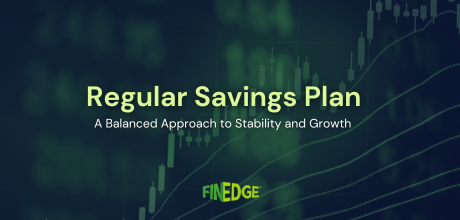What are Robo Advisors and How do They Work?

Globally, the market for robo-advisory services is growing rapidly, and experts believe that the Indian market will follow suit in due course. According to a recent Business Insider Intelligence forecast, robo-advisers will manage investment products worth $1 trillion by 2020 globally, which will go up to $4.6 trillion by as early as 2022. That’s a massive degree of acceleration! As an investor, it’s vital that you know what Robo Advisory platforms are, and how they work.
What are They?
Put simply, Robo Advisors are computerized platforms that aim to provide the services of a Financial Advisor. A typical Robo Advisory platform will automate the process of data gathering, risk profiling, and goal analysis, using a chatbot or web-based application in which investors will need to input their information. Having gathered all your relevant information, a typical Robo Advisor will produce a customized investment solution that revolves around stocks, bonds, mutual funds, and other products that may suit your needs. Most Robo Advisory Platforms will thereafter also offer investors the means to execute these recommendations with little or no need for paperwork.
How do They Work?
At the very core of a Robo Advisory platform lies a custom-built algorithm that’s based on Artificial Intelligence and Machine Learning (AI & ML). This algorithm is critical to the efficacy or the Robo Platform, as it is the sole determinant of the “advice” that flows to investors once they input their data. The inputs provided by you run through the algorithm, and the end result is a set of investment recommendations. In developing this algorithm, Robo Advisors tend to seek inputs from experienced Financial Advisors and experts who aim to transfer their knowledge and decision flows into the core of the machine. Usually, these Robo Advisory platforms are seamlessly connected to many third-party applications using APIs (a type of plug that connects two different software programs).
Are Robo Advisors for You?
That depends on multiple factors. Remember, successful investing is partly about selecting appropriate investment products, but also about how investors manage their emotions and resulting investment decisions. While Robo Advisors certainly provide a smooth, paperless and seamless experience when it comes to starting investments, they are unable to manage the “behavioural” side of investing, and hence many clients come away from Robo Platforms having had a harrowing experience! At FinEdge, we’ve aimed to combine the best of both worlds by commingling the ease and speed of Robo with the essential support of a Human Advisor. If you’re new to non-vanilla investment products or tend to take rash investment decisions, stay away from pure Robo Advisory platforms.
Your Investing Experts
Relevant Articles
The Power of Compounding: How Small Investments Turn into Big Wealth
Compounding is the single most powerful force behind long-term wealth creation. It rewards patience, discipline, and consistency more than any short-term strategy ever can. If you want your investments to grow exponentially instead of linearly, compounding must be at the centre of your approach.
Regular Savings Plan: A Balanced Approach to Stability and Growth
Not every investment in a portfolio is meant to maximise returns. Some are meant to preserve capital, manage volatility, and provide predictability. A regular savings plan serves exactly this role. It is designed for investors who want a more measured approach where stability takes priority, and growth plays a supporting role rather than the lead.
From Coffee to Crorepati: Small Lifestyle Tweaks Gen Z Can Make to Start Investing Early
Gen Z is often told to “stop buying coffee” if they want to invest. But that misses the point. Building wealth isn’t about sacrificing everything you enjoy. It’s about understanding how small, everyday decisions shape long-term habits. Starting early even with modest amounts can quietly make a meaningful difference over time.
.png)


.png)